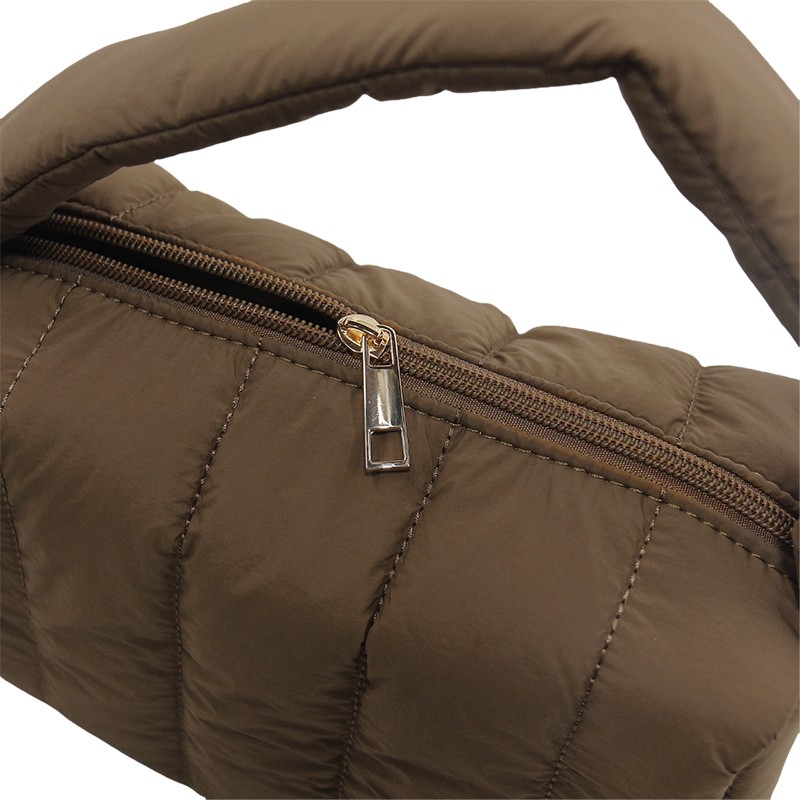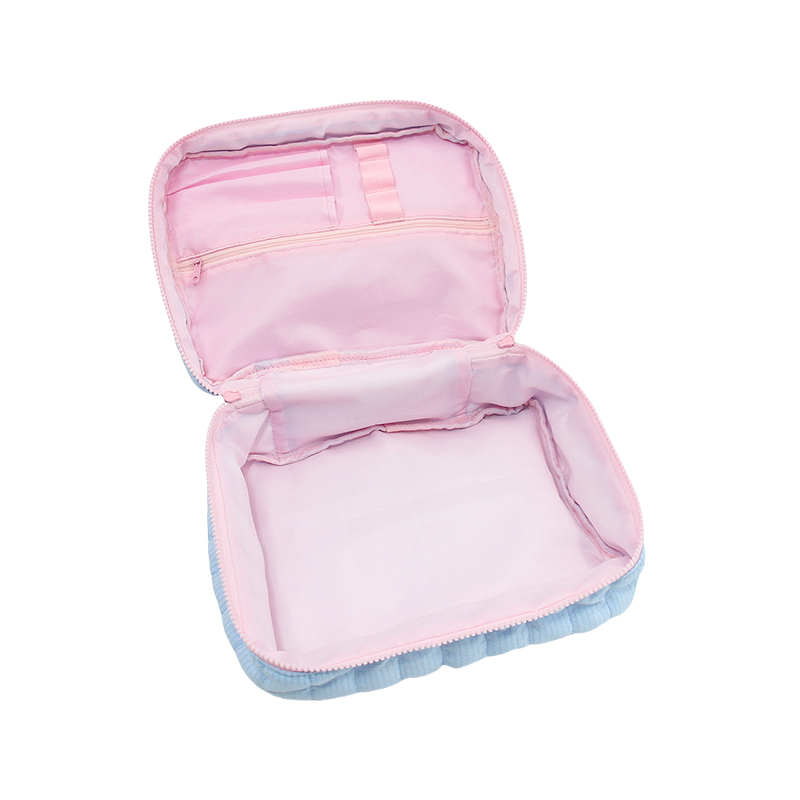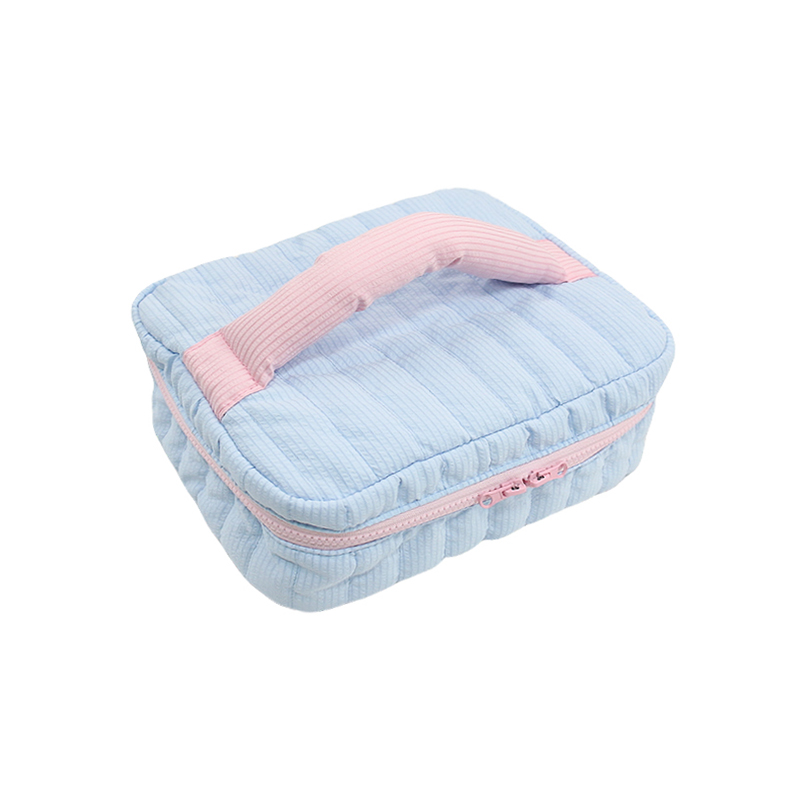Post Code:511400
Email:sales@blaccessory.com
whatsApp:+86 18028696007
Cosmetic manufacturing location affects costs, quality standards, regulatory compliance, and market access significantly impacting business success. Poor manufacturing choice leads to quality issues, regulatory violations, and increased operational costs reducing profitability and market competitiveness.
Best cosmetic manufacturing location[^1]s include China for cost efficiency[^2], South Korea for innovation[^3], France for luxury positioning[^4], and USA for regulatory compliance[^5]. Q&N observes growing demand for compartment-structured cosmetic bags[^6] at 2025 exhibitions reflecting manufacturers’ focus on organized product protection.
#global cosmetic manufacturing location[^1]s
Through our Q&N manufacturing experience serving global cosmetic brands for 15 years, I’ve observed how manufacturing location decisions impact brand success significantly. The overwhelming interest in compartment-structured cosmetic bags[^6] at recent exhibitions demonstrates manufacturers’ commitment to product protection and organization, reflecting quality priorities across different manufacturing regions.
Creating cosmetic brands requires strategic planning, regulatory compliance, manufacturing partnerships, and marketing execution while building consumer trust and market presence. Poor brand development leads to weak market positioning and consumer rejection despite quality products.
Make cosmetic brands by defining target markets, developing unique formulations, ensuring regulatory compliance, and establishing professional presentation. Q&N supports brand creators with compartment-structured cosmetic bags[^6] popular at 2025 exhibitions providing organized storage enhancing brand professionalism and consumer experience.
#cosmetic brand creation process
Brand strategy development establishes foundation for cosmetic brand success through market positioning, target audience identification, and competitive differentiation creating sustainable business advantages. Market research identifies consumer needs and competitive gaps providing opportunities for unique positioning. Brand personality development guides product development and marketing communications ensuring consistency across all touchpoints. Value proposition definition articulates unique benefits compelling consumer choice over competitor alternatives.
Product development translates brand strategy into tangible cosmetic offerings meeting consumer needs while reflecting brand values and positioning effectively. Formulation research identifies ingredients supporting brand claims and consumer benefits. Product testing validates safety and effectiveness ensuring regulatory compliance and consumer satisfaction. Package design communicates brand identity while protecting product integrity throughout distribution and usage.
Our Q&N experience supporting cosmetic brand creators reveals the importance of comprehensive planning extending beyond products to include storage and presentation solutions. The exhibition popularity of compartment-structured cosmetic bags[^6] demonstrates market demand for organized product protection. Professional presentation through quality accessories enhances brand credibility and consumer trust significantly.
Regulatory compliance ensures market access and consumer safety while protecting brand reputation from legal issues and product recalls. FDA registration provides documentation for US market entry requiring ingredient disclosure and safety validation. International regulations demand additional testing and certification for global distribution. Labeling requirements ensure proper consumer information and legal compliance across different markets.

Manufacturing partnerships enable brand creators to access production capabilities without massive capital investment in equipment and facilities. Contract manufacturer selection requires evaluation of capabilities, certifications, and quality systems[^7]. Minimum order quantities affect initial investment and inventory management strategies. Quality agreements establish standards and responsibilities protecting brand integrity throughout production processes.
Brand identity development creates visual consistency and emotional connection supporting consumer recognition and loyalty building. Logo design establishes memorable visual representation across all brand applications. Color palette selection supports brand personality and emotional positioning. Typography choices complement brand character and ensure readability across different applications and media.
Marketing strategy drives brand awareness and customer acquisition through targeted communications and promotional activities reaching ideal consumers effectively. Digital marketing provides cost-effective customer acquisition through social media and e-commerce platforms. Influencer partnerships create authentic product endorsements and consumer engagement. Traditional advertising supports brand credibility and mass market awareness when appropriate.
Distribution strategy determines market reach and revenue potential through various sales channels and partnership arrangements. Direct-to-consumer sales provide higher margins but require marketing investment and fulfillment capabilities. Retail partnerships offer broader reach but demand wholesale pricing and promotional support. E-commerce platforms balance reach with operational requirements and margin considerations.
Quality systems ensure consistent product performance and consumer safety throughout brand operations protecting reputation and customer satisfaction. Incoming material inspection prevents contaminated ingredients from entering production. Manufacturing oversight validates production standards and specification compliance. Finished product testing[^8] confirms quality before consumer distribution and market release.
Brand protection strategies secure intellectual property rights and prevent competitor infringement safeguarding brand investment and market position. Trademark registration provides legal protection for brand names and visual elements. Copyright protection covers marketing materials and creative content. Trade secret protection safeguards proprietary formulations and business processes.
| Brand Development Phase | Key Activities | Critical Success Factors | Q&N Support |
|---|---|---|---|
| Strategy Development | Market research, positioning | Clear differentiation | Professional presentation |
| Product Creation | Formulation, testing | Safety and effectiveness | Protective storage solutions |
| Identity Design | Visual elements, messaging | Consistent brand experience | Coordinated accessories |
| Market Launch | Marketing, distribution | Consumer awareness building | Exhibition-ready presentation |
| Growth Management | Scaling, protection | Quality maintenance | Compartment organization systems |
Cosmetic selection requires evaluating personal needs, product quality, ingredient compatibility, and brand reliability while considering budget constraints and usage requirements. Poor cosmetic choices result in skin reactions, unsatisfactory performance, and wasted money on unsuitable products.
Choose cosmetics by identifying skin type, researching ingredient quality, testing products gradually, and selecting reputable brands with proven track records. Q&N supports cosmetic organization through compartment-structured bags popular at 2025 exhibitions enabling systematic product storage and easy access.
Skin type identification forms the foundation for appropriate cosmetic selection affecting product performance, compatibility, and satisfaction throughout usage cycles. Oily skin benefits from oil-free formulations and mattifying products controlling excess sebum production. Dry skin requires moisturizing ingredients and hydrating formulations preventing flakiness and discomfort. Sensitive skin needs gentle formulations with minimal fragrances and potential irritants avoiding adverse reactions.
Ingredient analysis ensures cosmetic compatibility with personal preferences and skin requirements while avoiding harmful or ineffective components. Active ingredient research validates effectiveness claims and potential benefits supporting informed purchasing decisions. Allergen identification prevents adverse reactions in individuals with known sensitivities. Natural versus synthetic ingredient preferences guide selection based on personal values and skin responses.
Our Q&N observations from cosmetic industry exhibitions reveal consumer priorities in product organization and protection through compartment-structured storage solutions. Professional presentation enhances cosmetic longevity and application experience. Systematic organization improves product accessibility and reduces waste through better visibility and protection from contamination.
Quality assessment evaluates cosmetic performance, safety, and value proposition through various evaluation methods and information sources. Brand reputation indicates consistent quality and customer satisfaction based on market experience and consumer feedback. Professional reviews provide expert analysis of product performance and ingredient effectiveness. Customer testimonials offer real-world usage experiences and satisfaction data.

Price-performance analysis balances cost considerations with expected quality and longevity determining overall value proposition and budget allocation. Premium products justify higher costs through superior formulations and performance. Mid-range options provide good quality at reasonable pricing points. Budget alternatives offer basic functionality for cost-conscious consumers.
Application technique compatibility ensures cosmetic products work effectively with individual skill levels and routine preferences optimizing results and satisfaction. Beginner-friendly products provide easy application and forgiving formulations. Advanced products offer professional results but require technique development. Multi-purpose products simplify routines while providing versatile functionality.
Seasonal considerations affect cosmetic selection through climate variations, lifestyle changes, and evolving skin needs throughout the year. Summer formulations address heat, humidity, and sun exposure requirements. Winter products combat dryness and harsh weather conditions. Transitional seasons require adaptable products addressing changing environmental factors.
Color matching ensures cosmetic harmony with skin tone, personal style, and occasion requirements creating flattering and cohesive appearances. Foundation matching requires undertone identification and shade testing under various lighting conditions. Lip and cheek color coordination complements skin tone and overall makeup aesthetic. Eye shadow selection considers eye color enhancement and personal preferences.
Storage requirements protect cosmetic integrity and extend product lifespan through proper environmental conditions and contamination prevention. Temperature stability maintains formulation integrity and performance characteristics. Light protection prevents degradation of sensitive ingredients. Hygiene maintenance prevents bacterial contamination and product spoilage.
Trend awareness balances current fashion with personal style preferences and practical considerations ensuring relevant yet individual cosmetic choices. Social media influences provide inspiration while maintaining personal authenticity. Seasonal trends offer opportunities for experimentation and style evolution. Classic choices provide reliable options transcending temporary fashion changes.
| Selection Criteria | Evaluation Method | Key Considerations | Storage Solution |
|---|---|---|---|
| Skin Compatibility | Patch testing, gradual introduction | Individual sensitivity, allergies | Compartment separation |
| Quality Assessment | Research, reviews, testing | Brand reputation, performance | Protective organization |
| Value Analysis | Price comparison, longevity | Cost per use, satisfaction | Efficient access systems |
| Application Ease | Personal testing, tutorials | Skill level, time availability | Systematic arrangement |
| Color Harmony | Professional matching, testing | Skin tone, personal style | Organized color grouping |
Cosmetic manufacturing excellence varies across countries based on specialization, cost efficiency, quality standards, and regulatory environment affecting product quality and business success. Understanding regional advantages helps optimize manufacturing decisions for specific product categories and market objectives.
China leads cosmetic manufacturing through cost efficiency and capacity, South Korea excels in innovation, France dominates luxury positioning, while USA ensures regulatory compliance. Q&N’s Guangzhou location provides cost-effective manufacturing with compartment-structured cosmetic bags[^6] trending at 2025 exhibitions demonstrating Chinese manufacturing versatility.
#best countries for cosmetic manufacturing
China dominates global cosmetic manufacturing through cost advantages, production capacity, and supply chain integration enabling competitive pricing and scalable operations. Manufacturing infrastructure supports diverse product categories from mass market to premium positioning. Skilled workforce provides expertise across formulation, production, and quality control. Supply chain density reduces logistics costs and accelerates production timelines significantly.
South Korea leads cosmetic innovation through advanced research capabilities, trend development, and technology integration creating cutting-edge products and consumer experiences. K-beauty influence drives global trends and consumer preferences. Scientific research produces breakthrough ingredients and formulation techniques. Premium positioning supports higher margins while maintaining competitive costs.
Our Q&N manufacturing experience in Guangzhou demonstrates Chinese capabilities extending beyond cost advantages to include innovation and quality excellence. The popularity of compartment-structured cosmetic bags[^6] at recent exhibitions reflects Chinese manufacturers’ ability to identify and respond to market trends effectively. Our 60 sewing machines and 120 workers provide scalable production capabilities meeting diverse client requirements.
France maintains luxury cosmetic manufacturing leadership through traditional expertise, premium positioning, and brand heritage supporting highest-margin products. Perfume and skincare excellence commands global respect and premium pricing. Regulatory standards ensure quality and safety meeting stringent European requirements. Brand association enhances product prestige and consumer willingness to pay premium prices.
United States provides regulatory compliance advantages and domestic market access while ensuring quality standards and consumer safety. FDA oversight ensures product safety and market acceptance reducing liability risks. Domestic manufacturing eliminates import duties and shipping complexities. Consumer preference for domestic products supports marketing positioning and brand loyalty.
Italy excels in luxury packaging and design innovation creating premium presentation and consumer appeal supporting higher margins and brand differentiation. Fashion industry connection influences cosmetic trends and aesthetic development. Craftsmanship tradition ensures attention to detail and quality execution. Design expertise creates compelling visual identity and consumer attraction.

Germany offers precision manufacturing and technical innovation particularly in machinery and production equipment serving cosmetic industry needs. Engineering excellence provides reliable manufacturing systems and quality control capabilities. Chemical industry expertise supports ingredient development and formulation innovation. Environmental standards drive sustainable manufacturing practices and clean technology adoption.
Japan provides advanced technology integration and quality precision particularly in high-tech beauty devices and innovative formulations. Consumer sophistication drives continuous innovation and quality improvement. Technology integration creates unique product categories and competitive advantages. Manufacturing precision ensures consistent quality and performance reliability.
Switzerland combines luxury positioning with scientific innovation particularly in high-end skincare and anti-aging products commanding premium pricing. Research capabilities produce patented ingredients and breakthrough formulations. Quality reputation supports premium positioning and consumer trust. Regulatory compliance ensures safety and efficacy standards.
India emerges as cost-effective manufacturing location with growing capabilities in natural and herbal cosmetics reflecting traditional knowledge and ingredient access. Ayurvedic tradition provides unique ingredient knowledge and formulation expertise. Cost advantages enable competitive pricing while maintaining quality standards. Growing domestic market provides additional opportunities beyond export manufacturing.
Manufacturing decision factors include cost structure, quality capabilities, regulatory compliance, and market access requirements affecting overall business success and profitability. Total cost analysis considers manufacturing, logistics, and regulatory expenses. Quality capabilities must match brand positioning and consumer expectations. Regulatory compliance ensures market access and reduces legal risks.
| Manufacturing Location | Key Advantages | Specialization Areas | Cost Level |
|---|---|---|---|
| China | Cost efficiency, capacity | Mass production, accessories | Low |
| South Korea | Innovation, trends | K-beauty, advanced formulations | Medium |
| France | Luxury positioning, heritage | Perfume, premium skincare | High |
| USA | Regulatory compliance, market access | Domestic brands, safety standards | High |
| Germany | Precision, technology | Manufacturing equipment, chemicals | High |
| Japan | Technology integration, quality | Beauty devices, innovation | High |
Best cosmetic manufacturing locations balance cost efficiency, quality standards, and market requirements, with Q&N’s Chinese operations providing versatile capabilities including compartment-structured cosmetic bags trending at 2025 exhibitions.
[^1]: Understanding the impact of location on costs and quality can help you make informed decisions for your brand.
[^2]: Explore how China’s manufacturing capabilities can significantly reduce your production costs.
[^3]: Discover the latest trends and technologies that make South Korea a leader in cosmetic innovation.
[^4]: Learn about the unique qualities that make French cosmetics synonymous with luxury and prestige.
[^5]: Understanding US regulations can help ensure your products meet safety and compliance standards.
[^6]: Find out how these bags can enhance product organization and consumer experience.
[^7]: Learn how implementing quality systems can protect your brand’s reputation and consumer trust.
[^8]: Learn about the importance of validating safety and effectiveness before market release.
Cosmetic bag manufacturers, custom cosmetic bags, cosmetic bag factory, bulk canvas cosmetic bags, wholesale bulk cosmetic bags, beauty, skin, PVC.
Hair Accessories: Hair ties, hair clips, headbands, and hairbands. Chic, stylish, suitable for any occasion.
Copyright © 2025 Bling Accessory Co., Ltd. | All Rights Reserved.